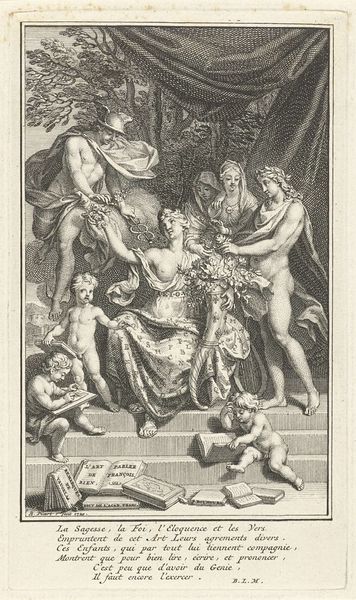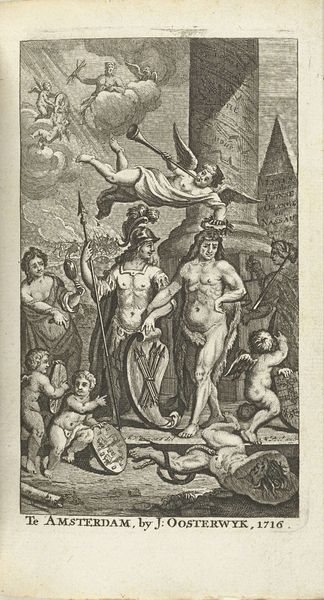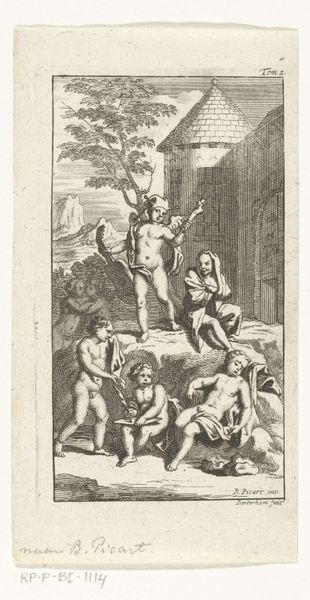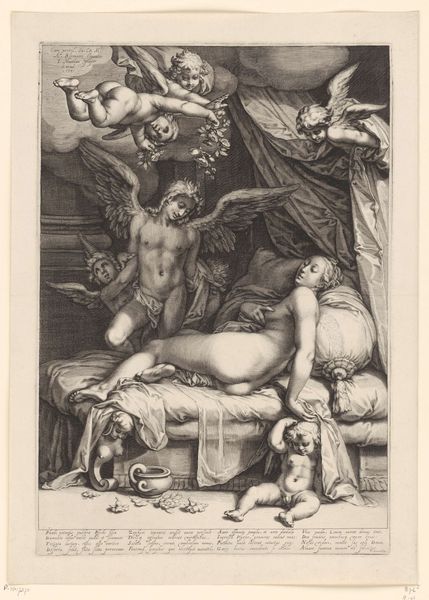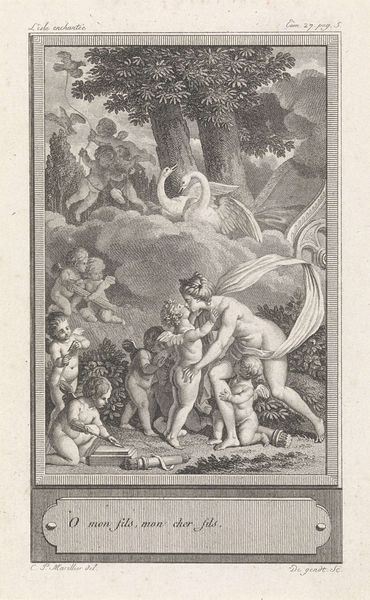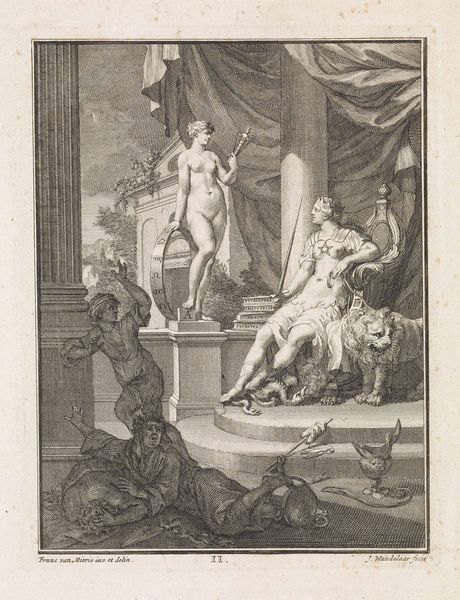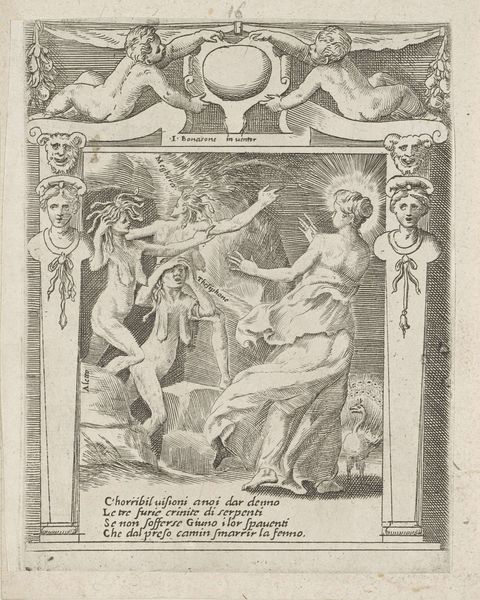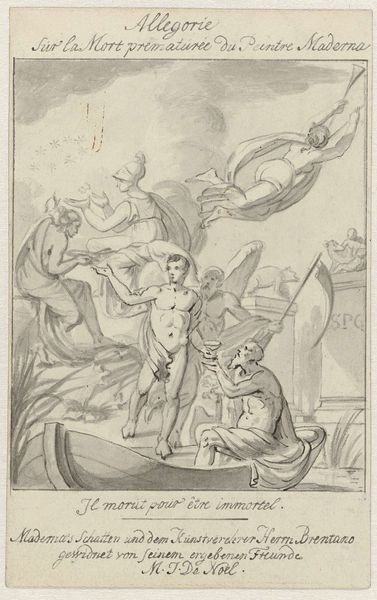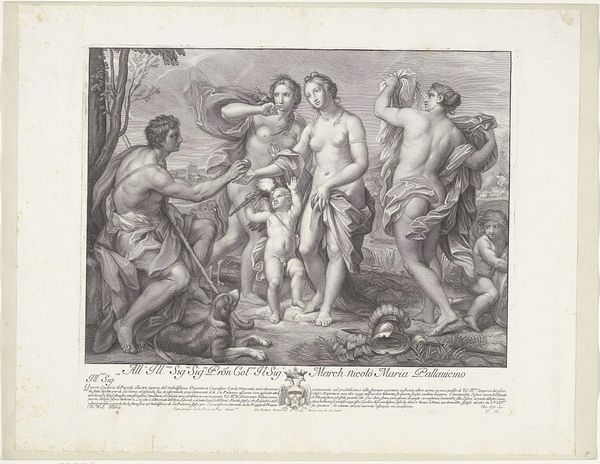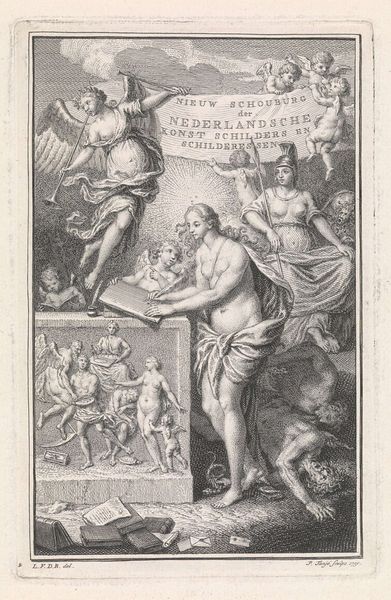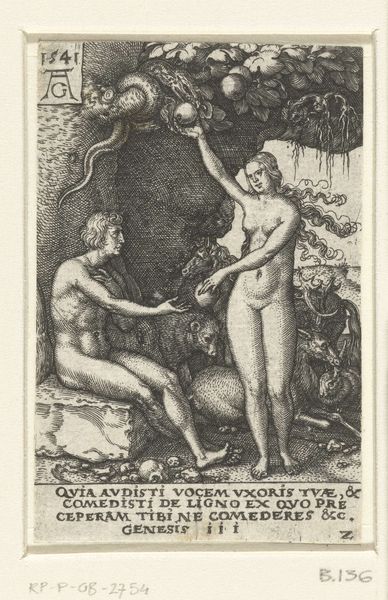
engraving
#
allegory
#
baroque
#
old engraving style
#
figuration
#
mythology
#
line
#
history-painting
#
nude
#
engraving
Dimensions: height 252 mm, width 183 mm, height 357 mm, width 263 mm
Copyright: Rijks Museum: Open Domain
Bernard Picart made this engraving, De Danaïden, sometime between 1693 and 1733. It depicts a scene from Greek mythology where the Danaïdes, daughters of Danaus, are condemned to endlessly fill a vessel with water as punishment for murdering their husbands. This image is striking as it encapsulates a crucial aspect of the cultural milieu in which it was produced; the revival of interest in classical antiquity and its integration into the visual arts. It reflects the values and aesthetic preferences of the elites in the 17th and 18th centuries. The engraving also references the social structures of its time through the female figures’ never-ending, futile labour, contrasting the free intellectual work of elites, such as Picart. Historians often consult classical literature, social histories, and studies of artistic patronage, to understand these nuances. By doing so, we can better grasp the dialogue between the artwork and its cultural context.
Comments
No comments
Be the first to comment and join the conversation on the ultimate creative platform.
